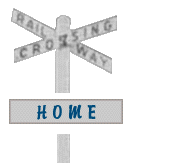








The first official account of mail delivery in Canada was from 1693, when a packet of letters was transported from Montreal to Quebec City. But regular mail service was far slower in arriving to our province. Obviously, the principal stumbling block was the fact that the Island is surrounded by water, or-- even moreso-- the fact that we are locked in by ice for up to five months. During the winter months, mail coming to or leaving the Island had to be transported across the Northumberland Strait by iceboat, a large rowboat with runners that could be pushed across the longer stretches of ice. Needless to say, this made mail delivery a slow and even sometimes dangerous process. Despite these obstacles, the bill establishing the Island mail service was passed through the legislature on May 3, 1827. The bill recommended that mail be delivered to Princetown-- present-day Malpeque-- and three other locales in the western part of the Island. During the difficult winter months, the mail was to be brought once a week, or every fortnight at the outside limit.
In June 1827, the colonial government called for tenders on the mail service and Richard Bagnall became the carrier for western P.E.I. The rugged traveling involved in mail delivery posed no difficulty for Bagnall, as he also ran the first stagecoach between Charlottetown and Princetown. The postage rates at the time were only two pennies for letters and half-penny for papers. But while the rates were not high, the rate at which the mail moved was impossibly slow by today's standards.
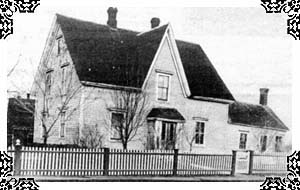 Kensington has a long
history of mail service. Barrett's Cross
had an official post office in operation for sixteen
years before the creation of Canada Post in 1867. Before
1850, mail was brought to Kensington twice a week by
horseback, usually by residents who had travelled to
Charlottetown on personal business. These makeshift
couriers would then deliver the mail to William Glover's
house, where the letters and packages would be sorted and
distributed.
Kensington has a long
history of mail service. Barrett's Cross
had an official post office in operation for sixteen
years before the creation of Canada Post in 1867. Before
1850, mail was brought to Kensington twice a week by
horseback, usually by residents who had travelled to
Charlottetown on personal business. These makeshift
couriers would then deliver the mail to William Glover's
house, where the letters and packages would be sorted and
distributed.
William Glover was the father of the postal
service in Kensington. In 1817, he immigrated with his
wife and son from Dumfrashire, Scotland, becoming one of
the first settlers in rustic Five Lanes' End. Undaunted
by the wilderness and isolation, the Glovers raised nine
children and built a spacious home for their clan. It was
in this house that the first post office was officially
opened in 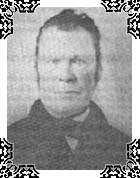 1851, with Glover serving
as postmaster.
1851, with Glover serving
as postmaster.
After 1851, the mail was not reliant on civilian traffic to and from Charlottetown, but arrived instead by stagecoach. Realizing that these coaches would likely stop before heading back to town, Glover built a coach house where the tired horses could be stabled and even provided refreshments from the local brewery for the drivers. And if a coachman happened to imbibe too heavily, Glover even had overnight accomodations.
Glover passed away in 1875, and a twin monument marking the resting places of he and his wife were among the first headstones in the Kensington Anglican church cemetery. But the legacy of the Glovers in the mail service was far from over. After William's passing, his son and nakesake, William Jr., assumed the duties of postmaster, retaining the position until his death in 1886. Then, a nephew-- Gordon Glover-- was appointed to the post and served until 1927. For over a century, handling the mail remained a family affair for the Glovers.
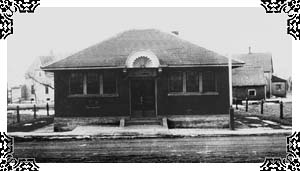 In 1927, a new post
office was opened in the Town Square, ending the stay of
the postal service in Glover residences. It served
Kensington residents in this location for thirty years,
until it was moved into the new federal building built in
1957. The only part now remaining from this original post
office building are the doors, which have been preserved
at the Kensington
train station.
In 1927, a new post
office was opened in the Town Square, ending the stay of
the postal service in Glover residences. It served
Kensington residents in this location for thirty years,
until it was moved into the new federal building built in
1957. The only part now remaining from this original post
office building are the doors, which have been preserved
at the Kensington
train station.
Long before rural mail delivery began in 1919,
mail was delivered to communities surrounding Kensington.
Mail was both picked up and left at local post offices,
which ran either in the general store or in the home of a
community resident. In French River, the post office was
situated in the home of Mrs. Neil Mackay until 1893. At
first, William Glover would only deliver the mail to her
once a week, but he eventually expanded his delivery
service to twice or three times weekly. The post service
in Cavendish operated from the residence of Alexander and
Lucy MacNeill, the house where world-famous author Lucy
Maud Montgomery grew 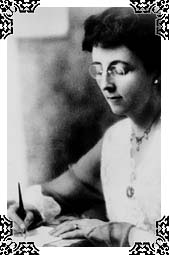 up. Maud
helped sort the mail, and it is said that-- if she had
not been able to keep her rejected manuscripts a secret--
she might never have published Anne
of Green Gables.
up. Maud
helped sort the mail, and it is said that-- if she had
not been able to keep her rejected manuscripts a secret--
she might never have published Anne
of Green Gables.
It is fortunate that Montgomery published her books when she did, because for the most part, these small local post offices were closed in the late 1960's and early 1970's. Today, all rural deliveries come directly from the Kensington Post Office. The post office continues to be an important landmark in Kensington, especially since the town clock was placed outside it in 1964. The ticking of the clock, and the worldwide deliveries now available inside, are a constant reminder of how much has changed since William Glover first arrived at Five Lanes' End.
